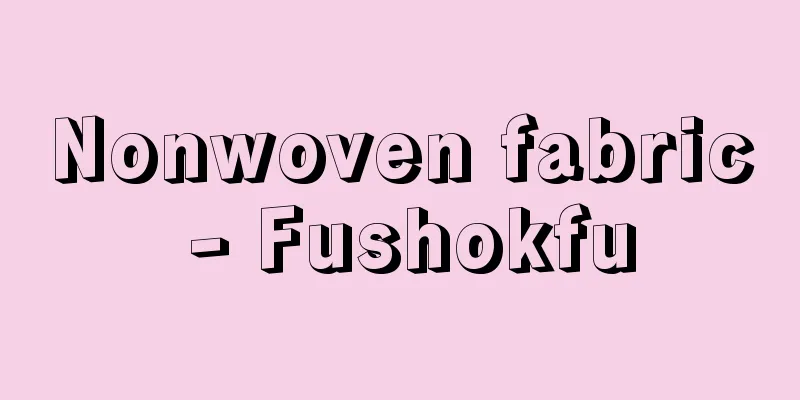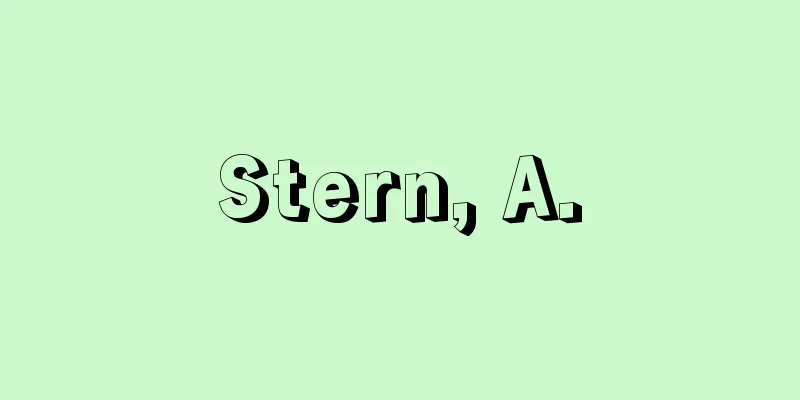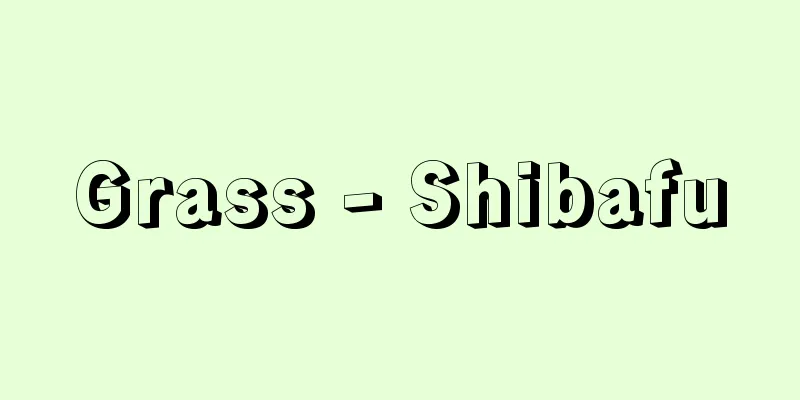Nonwoven fabric - Fushokfu

|
It is a cloth-like material in which staples or filaments of natural or man-made fibers are bonded with adhesives, molten fibers, or mechanical methods, and is not based on weaving, knitting, or shrinkage. In principle, the manufacturing method of nonwoven fabric consists of the process of making a fiber sheet and the process of bonding it as necessary. There are two methods for making fiber sheets: dry method and wet method. In the dry method, water is not used and a fiber sheet (called a web) is formed using a device such as a spinning card or garnet. Usually, the fibers are made random so that the web does not have a direction, and a type called a random web is used. Webs can be bonded using adhesives (methods using synthetic resin solutions or emulsions, methods using resin powder, and methods using fibers as adhesives) or mechanical bonding methods (needle punch method, stitch method). In the wet method, raw fibers are dispersed in a liquid containing water or a bonding agent and made into a sheet using a papermaking machine. In addition, there is a direct method in which nonwoven fabric is made at the same time as fiber formation without using existing fibers. The main methods are the spray fiber method and the spunbond method. In the former, the raw polymer is made into a solution or melt and sprayed from a spinning nozzle, where it is blown away and broken up by an airflow from around the nozzle, creating fibers that are then made into a random mat of extremely fine fibers. In the latter, filaments extruded from a spinning nozzle are stretched by a jet, the filaments are broken down by frictional charging or applied static electricity, and the filaments are made to form loops, which are then piled up to form a web. It is used for many purposes, including interlining, filters, thermal insulation and soundproofing, felt, napkins, sheets, polished cloth, and disposable cloth. Source: Morikita Publishing "Chemical Dictionary (2nd Edition)" Information about the Chemical Dictionary 2nd Edition |
|
天然繊維あるいは人造繊維のステープル,フィラメントが,接着剤,溶融繊維あるいは機械的方法で接合された布状体をいい,製織,編成,縮重によらないものである.不織布の製造方法は,原理的には繊維シートをつくる工程と,必要に応じてこれを接合する工程からなる.繊維シートをつくる方法に乾式法と湿式法とがある.乾式法は水を用いず,紡績用カードあるいはガーネットなどの装置により繊維シート(ウェッブとよぶ)を形成する.通常,ウェッブに方向性をもたせないよう,繊維をランダムにする考慮がされ,ランダムウエバーといわれる形式のものが用いられる.ウェッブを接合するには接着剤によるもの(合成樹脂溶液やエマルションを用いる方法,樹脂粉末を用いる方法,繊維を接着剤として用いる方法)と機械的接合法(ニードルパンチ法,ステッチ法)とがある.湿式法は水あるいは接合剤を含有した液中に原料繊維を分散させ,抄紙機を利用してシート状にするものである.そのほか,既成の繊維を用いずに繊維形成と同時に不織布をつくる直接法がある.おもなものにスプレーファイバー法,スパンボンド法がある.前者は原料高分子を溶液,融液状にして紡糸ノズルにより噴射させ,ノズル周囲からの空気流で吹きとばし,分断し,繊維をつくり,きわめて細い繊維からなるランダムマットにする.後者は紡糸金口から押し出されたフィラメントをジェットで延伸し,フィラメントを摩擦帯電や与えた静電気によりバラバラにして,ループを描かせて,堆積し,ウェッブを形成する.芯地,フィルター,断熱防音,フェルト,ナプキン,シーツ,つや出し布,使い捨て布など多くの用途に利用される. 出典 森北出版「化学辞典(第2版)」化学辞典 第2版について 情報 |
<<: Fujiyoshida [city] - Fujiyoshida
Recommend
Portuguese oyster
...Egg-laying. (4) Portuguese oyster C. angulata ...
Thelotornis kirtlandi (English spelling) Thelotorniskirtlandi
...It is oviparous and lays about 10 to 14 eggs a...
Yabakei [town] - Yabakei
A former town in Shimoge County in northern Oita P...
Aromatization reaction - aromatization reaction
A reaction to synthesize aromatic hydrocarbons. Ar...
Pension Sliding System - Nenkin Sliding System
The automatic revision of pension amounts in line ...
Abnormal proliferation
...the phenomenon in which certain plankton multi...
Kiseichu Line - Kiseichusen
...The section between Kameyama and Tsu was purch...
Farthingale (English spelling)
A type of waist-framed petticoat worn by women in ...
Hanaoka Incident
A Chinese worker rebellion and its suppression at ...
Aogiri (Chinese parasol tree) - Aogiri (English spelling)
A deciduous medium-sized tree of the Sterculiaceae...
syncope
Heart diseases that cause fainting include: Brady...
Elvis Presley
…He was the biggest postwar star born in American...
tricorne
…Following the rise of the Netherlands in the 17t...
ADH
Antidiuretic hormone Source : Internal Medicine, 1...
Horta, Victor, Baron
Born: January 6, 1861, Ghent Died: September 11, 1...









